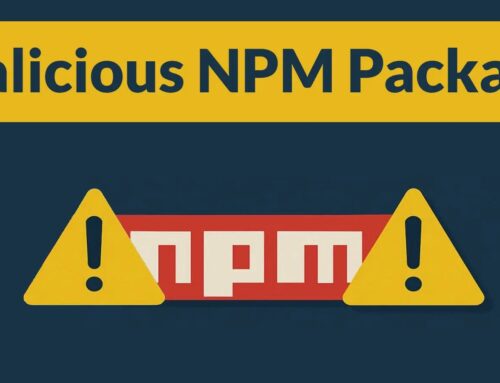
PoC Exploit Released for BIND 9 Vulnerability that Let Attackers Forge DNS Records
The Critical Threat: BIND 9 DNS Poisoning Exploit Now Public
The digital landscape just became a little more perilous for countless organizations. A public Proof-of-Concept (PoC) exploit has been released, demonstrating a critical vulnerability in BIND 9 – the internet’s most widely deployed Domain Name System (DNS) software. This development elevates the threat from theoretical to tangible, allowing remote, unauthenticated attackers to forge DNS records and potentially wreak havoc across networks globally. For IT professionals, security analysts, and developers, understanding and mitigating this risk is paramount.
Understanding CVE-2025-40778: A Deep Dive into DNS Cache Poisoning
The vulnerability in question, tracked as CVE-2025-40778, was initially disclosed by the Internet Systems Consortium (ISC) on October 22nd. This flaw represents a severe weakness that enables DNS cache poisoning. In essence, an attacker can exploit this vulnerability to inject forged DNS records into a target DNS resolver’s cache. When a client later requests a domain name, the poisoned resolver returns the malicious, attacker-controlled IP address instead of the legitimate one.
The implications of successful DNS cache poisoning are far-reaching:
- Redirection to Malicious Sites: Users attempting to visit legitimate websites could be silently rerouted to phishing sites, malware distribution platforms, or pages designed for credential harvesting.
- Man-in-the-Middle Attacks: Attackers can intercept and manipulate network traffic, potentially gaining access to sensitive data or injecting malicious content.
- Service Disruption: By redirecting traffic to non-existent or controlled servers, attackers can effectively disrupt legitimate services.
- Erosion of Trust: Repeated exposure to forged DNS records erodes user trust in online services and the underlying network infrastructure.
The release of a public PoC exploit significantly lowers the bar for attackers, making it easier for even less sophisticated threat actors to leverage this critical vulnerability.
Remediation Actions: Securing Your BIND 9 Infrastructure
Given the severity of CVE-2025-40778 and the existence of a public exploit, immediate action is required. Organizations running BIND 9 must prioritize updating and reconfiguring their DNS infrastructure.
- Patch Immediately: The most crucial step is to apply the security patches released by ISC. Ensure your BIND 9 installation is updated to the latest stable version that addresses this vulnerability. Regularly monitor ISC advisories for new updates and critical patches.
- Implement DNSSEC (DNS Security Extensions): DNSSEC adds a layer of cryptographic validation to the DNS resolution process, making it significantly harder for attackers to inject forged records. While not a silver bullet against all DNS attacks, it provides strong protection against cache poisoning.
- Limit Recursion: Configure your BIND servers to only allow recursive queries from trusted clients or internal networks. Publicly accessible recursive resolvers are prime targets for cache poisoning attacks.
- Rate Limiting: Implement response rate limiting (RRL) to mitigate certain types of DNS amplification and cache poisoning attacks by restricting the number of responses a server sends to a single IP address within a given timeframe.
- Monitor DNS Traffic: Employ robust network monitoring tools to detect anomalous DNS query patterns or unusual responses. Look for signs of suspicious traffic or unexpected resolutions.
- Regular Audits and Configuration Reviews: Periodically review your BIND 9 configurations to ensure best practices are followed and unnecessary features are disabled.
Tools for Detection and Mitigation
Leveraging the right tools can significantly aid in identifying vulnerable systems and fortifying your DNS infrastructure.
| Tool Name | Purpose | Link |
|---|---|---|
| ISC BIND Releases | Official source for BIND 9 updates and patches. | https://www.isc.org/bind/ |
| DNSSEC-Tools | Utilities for deploying and managing DNSSEC. | https://www.dnssec-tools.org/ |
| nslookup / dig | Command-line tools for querying DNS servers and validating responses. | (Standard OS tools) |
| Zeek (Bro IDS) | Network Security Monitor capable of deep DNS traffic analysis. | https://zeek.org/ |
| Snort / Suricata | Intrusion Detection Systems (IDS) with rulesets for detecting DNS anomalies. | https://www.snort.org/ (Snort) https://suricata-ids.org/ (Suricata) |
Key Takeaways: Prioritizing DNS Security
The release of a public PoC exploit for CVE-2025-40778 serves as a stark reminder of the foundational role DNS plays in internet operations and the devastating impact of its compromise. Organizations must recognize the heightened risk posed by this BIND 9 vulnerability and act decisively. Prioritize patching, implement robust security configurations like DNSSEC, and continuously monitor your DNS infrastructure for signs of attack. Proactive defense of critical infrastructure like DNS is not merely a recommendation; it is an operational imperative.





